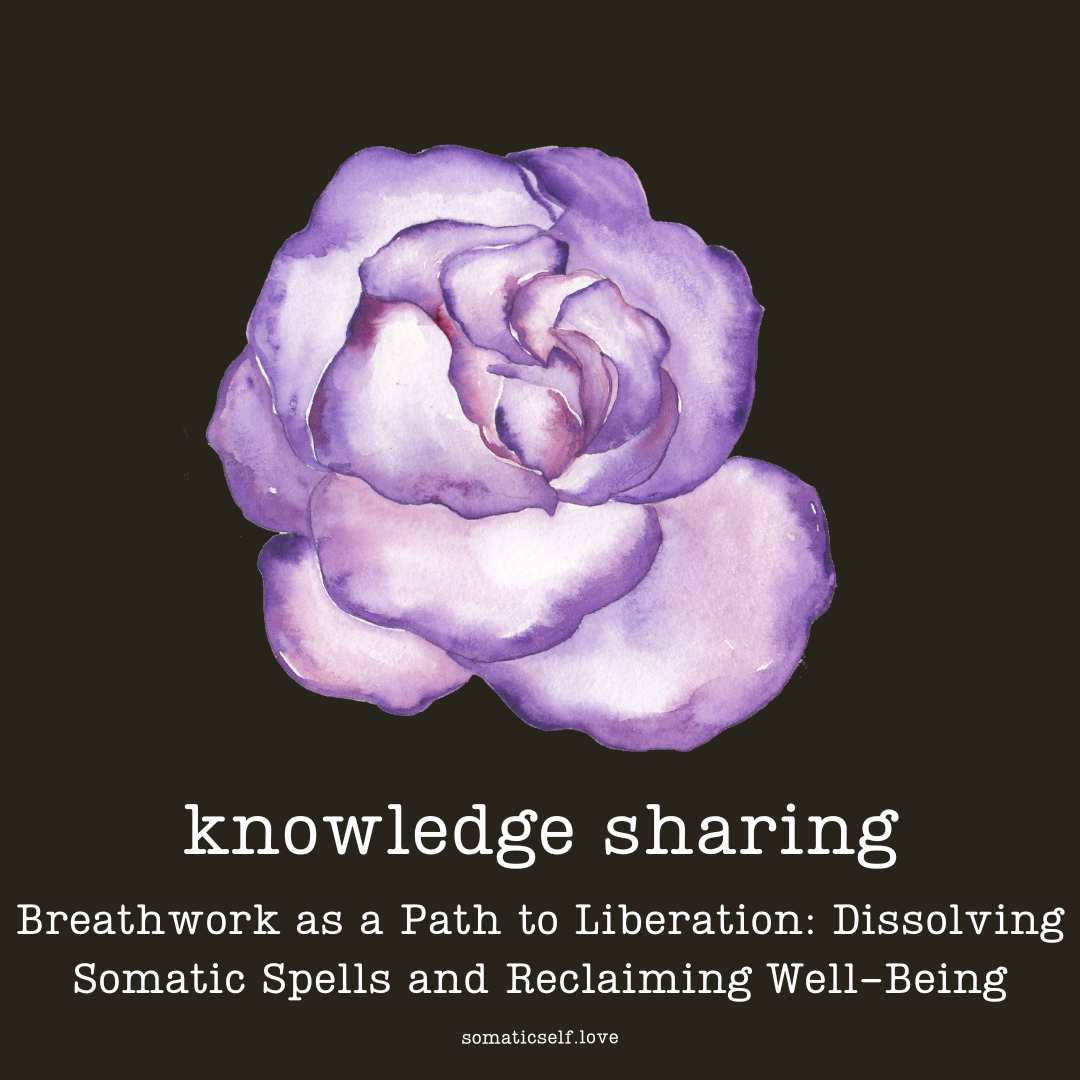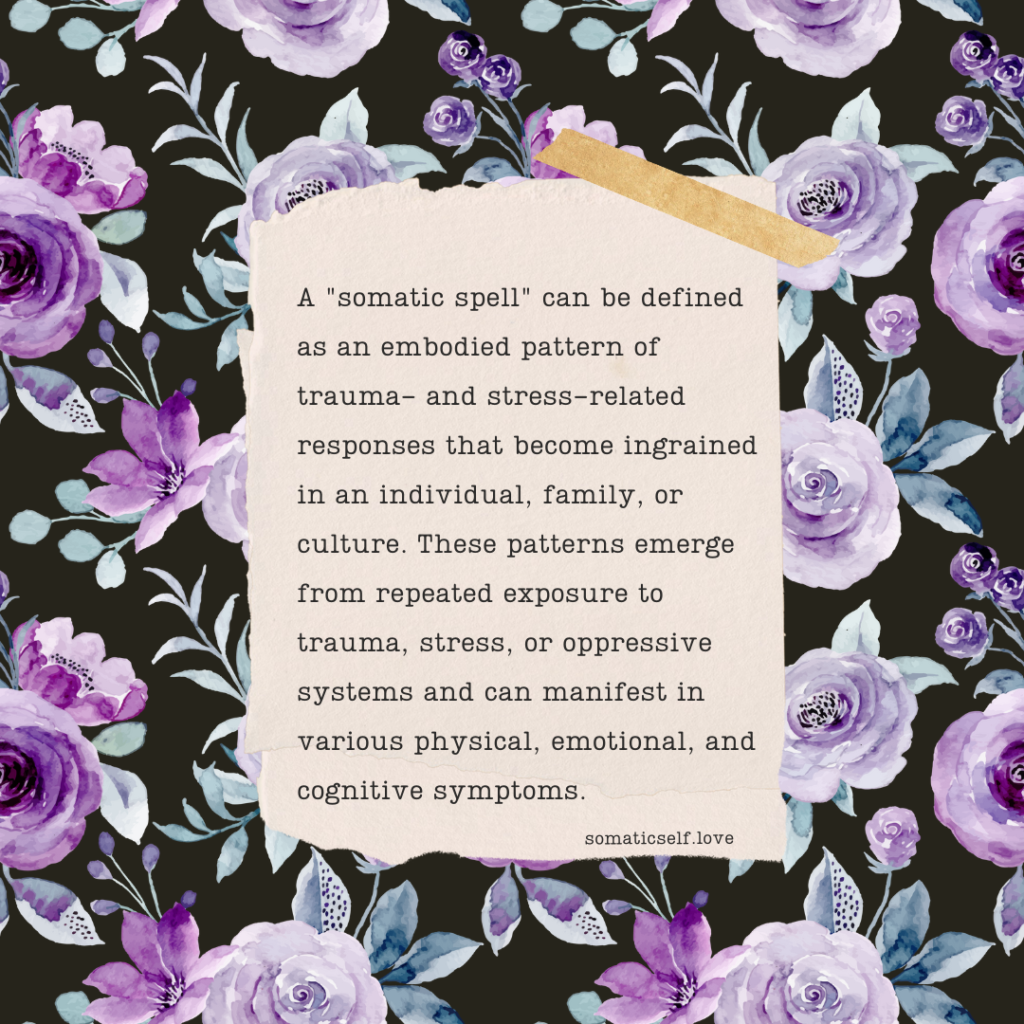Breathwork as a Path to Liberation: Dissolving Somatic Spells and Reclaiming Well-Being

A “somatic spell” can be defined as an embodied pattern of trauma- and stress-related responses that become ingrained in an individual, family, or culture. These patterns emerge from repeated exposure to trauma, stress, or oppressive systems and can manifest in various physical, emotional, and cognitive symptoms. From a Systems Thinking perspective, somatic spells can be viewed as interconnected phenomena that manifest at the macro, meso, and micro levels of society:
- Macro level (societal): Somatic spells at the macro level can be seen in how culture and societal norms perpetuate certain patterns of behavior, emotional expression, and stress responses. These patterns can be reinforced by institutions, media, and cultural narratives that normalize trauma and stress. For example, a society with a history of gender-based violence and discrimination may perpetuate somatic spells that manifest as anxiety, hypervigilance, or dissociation among women.
- Meso level (community and organizational): At the meso level, somatic spells can appear in the dynamics of communities, organizations, and social groups. These patterns can be passed down within families or become ingrained in the culture of a particular organization. For instance, a workplace with a history of toxic leadership and high stress might create somatic spells among employees, manifesting as chronic tension, low morale, and burnout.
- Micro level (individual): On the individual level, somatic spells can manifest as deeply ingrained patterns of emotional, cognitive, and physiological responses to trauma and stress. These patterns can be influenced by one’s personal history, genetic predispositions, and early attachment experiences. For example, an individual who has experienced childhood abuse or neglect may develop a somatic spell characterized by chronic fear, mistrust, and difficulty forming secure relationships.
To address somatic spells from a Systems Thinking perspective, it’s essential to recognize and address the interconnected factors that contribute to their development and maintenance. These may include:
- Challenging toxic cultural norms and narratives that perpetuate trauma and stress.
- Implementing policies and practices that promote safety, equity, and healing within communities and organizations.
- Offering support and resources for individuals and families to address the intergenerational transmission of trauma and somatic spells.
- Encouraging the development of trauma-informed, somatically-focused therapeutic approaches to help individuals release and heal from somatic spells.
By acknowledging and addressing somatic spells at all levels of society, we can work toward creating a more compassionate, resilient, and trauma-informed culture.

So, How Can We Move Towards a Different Future?
Breathwork is a powerful tool that can help break somatic spells associated with family and lineage trauma, cultural programming, and individual feelings of shame and blame. By integrating systems thinking, trauma recovery, and somatics, we can better understand the impact of breathwork on various levels:
- Physiological level: Breathwork can have a profound impact on the autonomic nervous system, which is responsible for regulating our body’s stress response. By consciously being with our breath, we shift from a state of fight-or-flight (sympathetic activation) to a state of relaxation and restoration (parasympathetic activation). This shift can help release stored tension and trauma in the body, promoting healing and resilience.
- Emotional level: Breathwork can help individuals access and process difficult emotions, such as shame and blame, that may be associated with family and lineage trauma or cultural programming. By creating a safe space in our bodies for emotional exploration and release, breathwork can facilitate emotional healing and self-compassion.
- Cognitive level: As breathwork helps to calm the nervous system and release stored emotions, it can also have a positive impact on cognitive functioning. This shift can help individuals challenge and reframe negative beliefs and patterns that may have arisen from family and lineage trauma, cultural programming, or personal experiences.
Using systems thinking, we can examine how breathwork can have a ripple effect on the various interconnected levels of our lives:
- Macro level (societal): As individuals engage in breathwork and begin to heal from their trauma and release somatic spells, they may become more aware of the systemic factors contributing to their experiences. This awareness can foster a greater sense of empathy, compassion, and understanding, leading to a collective shift in societal attitudes and norms related to trauma and healing.
- Meso level (community and organizational): Breathwork can be integrated into community and organizational settings, such as support groups, workshops, or team-building activities. By promoting healing and resilience on a larger scale, breathwork can contribute to the development of trauma-informed communities and organizations that prioritize the well-being of their members.
- Micro level (individual and family): On an individual level, breathwork can help break the cycle of intergenerational trauma and somatic spells within families. As individuals process and heal their own trauma, they create a healthier foundation for their children and future generations. This healing process can foster more secure attachment patterns, improved communication, and healthier coping mechanisms within families.
Breathwork is a powerful tool that can help break somatic spells and promote moving towards life on multiple levels. By integrating systems thinking, trauma recovery, and somatics, we can better understand the interconnected impact of breathwork on individuals, families, communities, and society as a whole. This holistic approach can pave the way for a more compassionate, resilient, and love-informed culture.